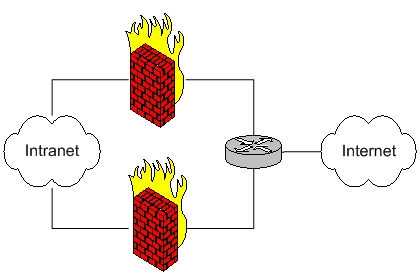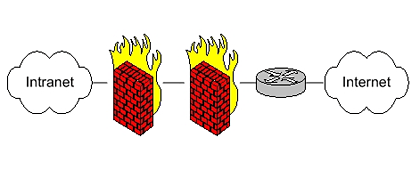Firewall redundancy: Deployment scenarios and benefits
There are, however, several good reasons to deploy multiple firewalls in your organization. Let's take a look at a few scenarios.
Many network administrators have considered implementing dual firewalls. It is an expensive option, and the administrator who proposes the idea is likely to encounter a response like "$5,000 for a firewall? Don't we have one of those already?" There are, however, several good reasons to deploy multiple firewalls in your organization. Let's take a look at a few scenarios.
Fault tolerance and load balancing
Many organizations choose to implement dual firewalls in a parallel fashion, as shown in the figure below. When the router is properly configured, this provides the added benefits of fault tolerance and load balancing. Both firewalls should be configured to "fail-safe," that is, in the event of a failure, they should automatically block all traffic. When configured in this fashion, the firewalls provide fault tolerance; when one fails, the other is able to carry the network traffic and keep the failure transparent to users.

The second benefit to this strategy, load balancing, is a performance benefit. The router may be configured to divide traffic between the two firewalls, either on a priority basis or on a fair-share basis. Spreading the traffic out among multiple firewalls in this fashion helps prevent the bottleneck problems that plague many networks.
Enhanced perimeter protection
It's also possible to deploy the two firewalls in a series circuit, as shown in the illustration below. When configured in this fashion, all traffic passing into or out of the network must pass through both firewalls. This setup is sometimes deployed in high-security environments to protect against firewall-specific vulnerabilities. In this case, the two firewalls are from different vendors and may even run on different operating systems.

Protected subnets
The final scenario we'll discuss is shown in the figure below. In this case, secondary firewall(s) are used to protect subnets of the internal network that have greater security requirements than the network as a whole. This type of scenario may be used, for example, to provide an accounting department added protection for sensitive financial data they wish to protect from other internal users.

Overall, the deployment of multiple firewalls offers a variety of benefits, ranging from greater performance to enhanced security. If your security environment warrants this type of scenario and your wallet is big enough, it's definitely an option worth considering.
About the author
Mike Chapple, CISSP is an IT Security Professional with the University of Notre Dame. He previously served as an information security researcher with the National Security Agency and the U.S. Air Force. Mike is a frequent contributor to SearchSecurity.com, a technical editor for Information Security magazine and the author of several information security titles, including the CISSP Prep Guide and Information Security Illuminated.







